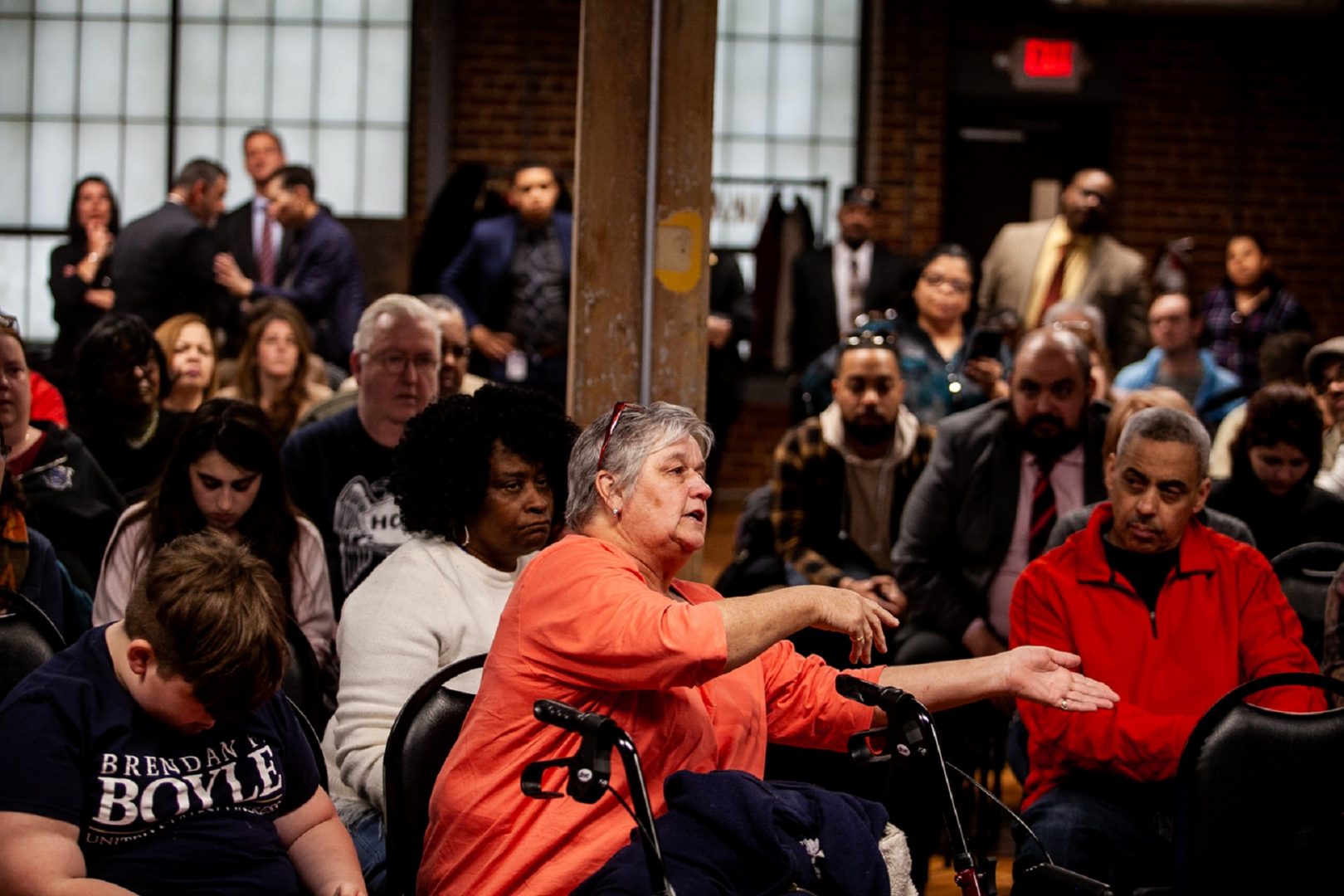
Kensington resident Donna Aument voiced her opposition to a proposed safe injection site at a meeting to update residents on the ongoing Philadelphia Resilience Project's efforts in combating the opioid epidemic.
Brad Larrison for WHYY

Kensington resident Donna Aument voiced her opposition to a proposed safe injection site at a meeting to update residents on the ongoing Philadelphia Resilience Project's efforts in combating the opioid epidemic.
Brad Larrison for WHYY

Brad Larrison for WHYY
Kensington resident Donna Aument voiced her opposition to a proposed safe injection site at a meeting to update residents on the ongoing Philadelphia Resilience Project's efforts in combating the opioid epidemic.
(Philadelphia) — City officials have formally nixed a plan to locate Philadelphia’s proposed supervised injection site on Hilton Street in Kensington. The decision to lease the building instead to the city’s Department of Public Health for use as laboratory and office space was approved by City Council’s Public Property Committee one day before a federal judge ruled in favor of the controversial public health intervention.
U.S. District Judge Gerald McHugh ruled that the injection facility proposed by the nonprofit Safehouse would be legal because it plans to operate “to reduce drug use, not facilitate it.”
In March, Safehouse officials touched off a public battle when former Pennsylvania Gov. Ed Rendell, a member of the nonprofit’s board, revealed a plan to lease the Hilton Street building. After the location became known, City Councilmember Mark Squilla introduced legislation that changed its zoning from industrial-commercial to single-family residential, a move that made it harder for Safehouse to open there.
Squilla said Wednesday that the judge’s ruling didn’t change his opposition to the supervised injection site. His position is rooted in the fact that harm-reduction advocates generally want services such as the supervised injection site located where the need is greatest. The Hilton Avenue building sits near the intersection of Kensington and Allegheny avenues, where opioids are sold openly.
If local authorities are going to allow for this strategy, Squilla said, they should place supervised drug-use sites in every neighborhood across Philadelphia, not just in his district and nearby neighborhoods affected by the opioid crisis.
“People who purchase drugs necessary to inject will only go [a] maximum of eight to 10 blocks, so they have to be located in every neighborhood in Philadelphia to be effective,” Squilla said. “There’s really no sense in doing it unless you are just considering keeping all the drug use in one area. And if that’s the plan, I would also oppose that.”
The ruling made waves across Kensington, with a mix of emotions coming from people who live in the neighborhood most directly affected by the crisis.
For Marnie M. Aument-Loughrey, head of the Kensington Independent Civic Association, the news came as a disappointment.
“This is a slap in the face of the community, but then it’s been a slap in the face to the community the entire time,” said Aument-Loughrey, whose community association supported U.S. Attorney William McSwain in the federal government’s lawsuit against Safehouse.
Amanda Fury of Somerset Neighbors for Better Living said the court decision won’t change the hardened battle lines over this issue in Kensington. Although her group hasn’t become involved in the injection-site battle, she said the two sides are so divided that a judge’s ruling won’t alter much in the short term.
“I’ve never been in the business of trying to change people’s minds on this,” said Fury, who added that she supports the ruling. “I don’t think that’s where we are in this process anymore. I feel like most people have made up their minds, and it’s going to take a lot more to make people see things in a different way.”
WHYY is the leading public media station serving the Philadelphia region, including Delaware, South Jersey and Pennsylvania. This story originally appeared on WHYY.org.

A collection of interviews, photos, and music videos, featuring local musicians who have stopped by the WITF performance studio to share a little discussion and sound. Produced by WITF’s Joe Ulrich.
The days of journalism’s one-way street of simply producing stories for the public have long been over. Now, it’s time to find better ways to interact with you and ensure we meet your high standards of what a credible media organization should be.